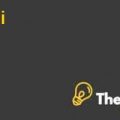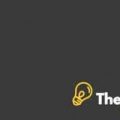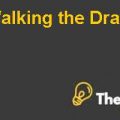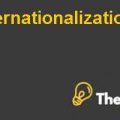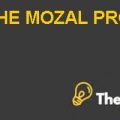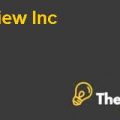
QUESTION 1: The launch of a new Wireless Technology
PHASE 1
1) Based on the survey results, recommend a percentage mark-up for the subscription pricing. Please show your work.
The calculated percentage mark-up for the subscription pricing as shown in the excel spreadsheet is exactly 15%. Before calculating this rate, the change in the prices has been calculated which is around 75%. As the price changes then the costs of the subscription and the costs of the device also change. Therefore, in order to identify those changes it has been assumed that 30% is the cost of subscription and 70% is the cost of the device. The detailed calculations can be found in the appendix.
2) What concerns, if any, do you have with this survey and its ability?
This survey does not seems to be an accurate survey as there are many factors that have not been considered by the survey. The first set of factors are the demographic variables such as income of different groups and age of the people have not been defined. Along with this, the survey should have incorporated the occupation of the concerned population in the final survey designed.
Secondly, there is a specific objective for which a survey is designed and conducted. However, in this case there seem to be no clear objectives of the management. The company should have combined its phone with the contract or the service provided. Lastly, close ended questions were asked where as all the people should have been asked open ended questions such as what was their desired price and what could be the most influencing factors due to which they might not be using the services of the company.
PHASE 2
1) Make a price recommendation based on these estimates. Please explain any concerns or caveats you might have with your recommendation.
The Price elasticity of demand for any product or service is calculated by dividing the percentage change in the demand with the percentage change in the price. Here the price elasticity of demand is -0.75. Secondly, variation in the data is shown by the standard error which is 1.2 in this case which is high. Therefore, based on these economic factors it is recommended for the company that it does not change its prices frequently and charge same prices to all of its customers.
PHASE 3
1) a. Consider the current subscription plan offered by the firma and assume it is the only service offered: basic service on the LG Device with content from NBC, CBS and ESPN. Plot the EVC demand curve for this subscription plan. Be sure to label your graph clearly.
Please refer to the appendix for the demand curve.
b. Now supposed the firm also offers an alternative plan consisting of basic phone service on the LG device with content from NBC, CBS, ABC, ESPN and STARZ for $50 per month. Plot the new EVC demand curve for the plan offered in 1a.
Please refer to the appendix for the demand curve.
2) Supposed the firm only offers the plan in 1(a). What is the revenue-maximizing, monopoly price of the subscription for a month of service?
The plan as shown in 1a is the plan of a monopoly company and for a monopoly the revenue maximizing price for the subscription would be $ 16.52.
3a. What are the revenue maximizing, monopoly price for the basic phone service on the LG device and the revenue maximizing, monopoly price for the optional content bundle? Show your work.
As a monopoly company, the revenue maximizing price for the optional bundle would be $ 12.93 and the revenue maximizing price for the subscription would be $ 16.52. The calculations could be referred in the excel spreadsheet.
3b. How do the revenues from this scheme compare with the scheme in Q2? Does your answer make intuitive sense? Why or why not?
The scheme which has been determined in the previous question is the same scheme which is in this question. Furthermore, if we think about these schemes intuitively then we can see that yes it makes an intuitive sense because the monopoly is the price controller and they can charge the maximum price possible in the market......................
This is just a sample partial case solution. Please place the order on the website to order your own originally done case solution.

